'Mary Poppins Returns' set visit report: Disney’s sequel will be ‘a gift to the world’
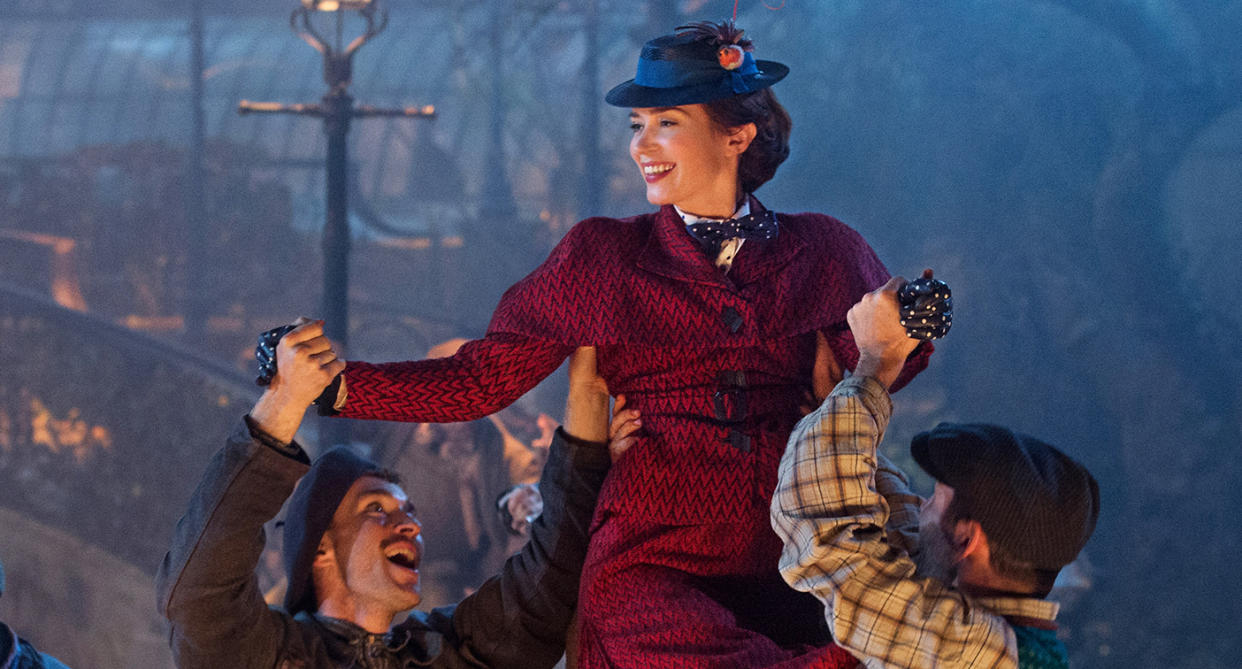
Disney’s Mary Poppins is practically perfect in every way.
It’s not just one of the most iconic musicals of all time (although it is that too), but one of the most iconic motion pictures ever. Period.
The 1964 musical, adapted from a series of novels by PL Travers, is considered by many to be Walt Disney’s most accomplished live action film. It earned Walt his one and only Best Picture nomination in his lifetime, won 5 Oscars in total, and is beloved by fans around the world.
It continues to be on hard rotation on the Christmas television schedules, and thanks to the Sherman brothers’ seminal writing, its soundtrack remains annoyingly hummable.
So, with all that in mind, it’s safe to say there’s a huge weight of expectation on Rob Marshall’s Mary Poppins Returns, but the Oscar-winning director of Chicago has assembled an incredible cast and crew to accomplish his supercalifragilisticexpialidocious task.
The long-awaited sequel will land in cinemas this Christmas, and Yahoo was lucky enough to be invited to see the film being made in April last year. We got to meet the cast, wander the sets, see the costumes, and – perhaps most excitingly – hear some of the new music that’s guaranteed to bury its way into your subconscious on just one listen.
Here’s everything you need to know about Christmas’ most anticipated movie.
It’s very relevant
Mary Poppins Returns takes place around 25 years after the events of the 1964 film, placing the sequel in the Depression-era England of the mid-1930s, precisely the time PL Travers began writing the 8 Mary Poppins books. The original film only took inspiration from the first book, leaving the sequel open to mine the other Mary Poppins stories for input.
“What we found in her books was really a treasure trove of new characters and episodes,” explains producer Marc Platt. “And we realised that we could bring the sequel, our own version and our own story, a original story of Mary Poppins all these years later in a very exciting way.”
Academy Award-winning screenwriter David Magee (Life of Pi) set about working on the screenplay that would pay homage to the original, update it to the 1930s, but also make it relevant to today.
A world in turmoil, a changing society, the shadows of a global financial crisis – it’s not hard to see parallels between the Depression and the crazy world we live in now, which is what drew Marshall to the project.
“When Disney came to us with this,” Marshall says, “It was right at a point in the world where [producer] John DeLuca and myself were so desperate to do it for that reason; in order to balance out the world in which we live in now, and we have spent three years working on this film. To live in a world that has hope and escape and fantasy and truth and reality and emotion and all those other things, feels so important right now.”
This also helped to land Meryl Streep for an extended cameo. “I want to be part of bringing this message to the world now,” Streep said to Marshall. “This, to me, is a gift to the world now.”
“What you realise is that the magic, the hope, the optimism, the connectivity that Mary Poppins brings as a character, to the family, and the world around her, is really what I think people are yearning for in their lives,” adds Platt.
Emily Blunt is Mary Poppins

How do you solve a problem like Mary? Julie Andrews’ performance as Mary Poppins is impossible to shake, which was something that Emily Blunt quickly realised when she signed up to step into Andrews’ shoes and play the ageless nanny.
“It’s very surreal to me being Mary Poppins,” says Blunt, who the producers insist is the only person they considered for Mary.
“I feel that I just try to approach her as I would any other character and not be caught up in the white noise of, ‘Oh my god, you are Mary Poppins’. I think that has been my main focus, just to approach her calmly as I would any other character. How I would play her, with what I have given on the page? I have not watched the originals since I saw it as a child, because I… no one is going to outdo Julie Andrews.”
“There’s quite a list of things you must be able to do to play Mary Poppins,” explains Marshall. “You need to be a great actor, but there’s also a humanity in the character. Even though she’s very upright and a strict nanny who is proper and so forth, underneath that there is this magical being who is bringing joy.”
“But she also needed to sing and dance, which is very rare these days. And I thought it was important that she be British because it’s such an iconic British character. And having just worked with Emily [on Into The Woods], I get what she does. I get her humour…we’re very simpatico. In fact, I don’t know who else could play the role besides Emily, to be quite honest.”
Lin-Manuel Miranda is Jack, a lamplighter

The ying to Mary’s yang, in the original film, was Dick Van Dyke’s Bert. In Mary Poppins Returns, it’s Lin-Manuel Miranda’s Jack. It’s the multi-talented composer/lyricist/playwright/rapper/actor’s biggest movie role to date, and his first project since setting Broadway (and the world) alight with Hamilton.
He jokes that the key difference between performing on stage and in a movie musical “is that you finish the musical number and they applaud in a year-and-a-half”, but he calls the opportunity a “dream come true”.
“There are dreams that you didn’t even have the audacity to have,” shares Miranda, “like that there would be a sequel to Mary Poppins and you could be dancing with Mary Poppins someday. Who would have the audacity to have that dream? And here we are.”
His character Jack is a lamplighter, the 1930s’ spiritual successor to the chimney sweeps of the Edwardian era. He, and an army of “leeries”, are responsible for lighting and extinguishing thousands of gas lights across London (fun fact: there are still around 1,500 working gas lights in London), but he also acts as a constant in Mary’s story too.
“[Jack] apprenticed under Bert from the original films so he knows all about Mary,” explains Miranda.
“He knows that Mary shows up and stuff’s going to happen and cool adventures will be had. So it’s really nice to play the Bert position in this film. You kind of get to go on all the fun adventures with the Banks family.”
“I think what Bert and Jack share is that they don’t lose the imagination that comes with childhood. I think that’s one of the themes, too, that grownups forget. Grownups forget imbuing the world with imagination at every turn. And what sets Bert apart and Jack apart is that they don’t.”
Miranda even gets his own chance to bring Mary Poppins Returns bang up to date with a rap in one of the film’s many musical numbers. And yes, the New York-born actor is doing an English accent in the film (you hear a snippet in the film’s new trailer) but whether it’ll be better or worse than Dick Van Dyke’s has yet to be proved.
It’s more real
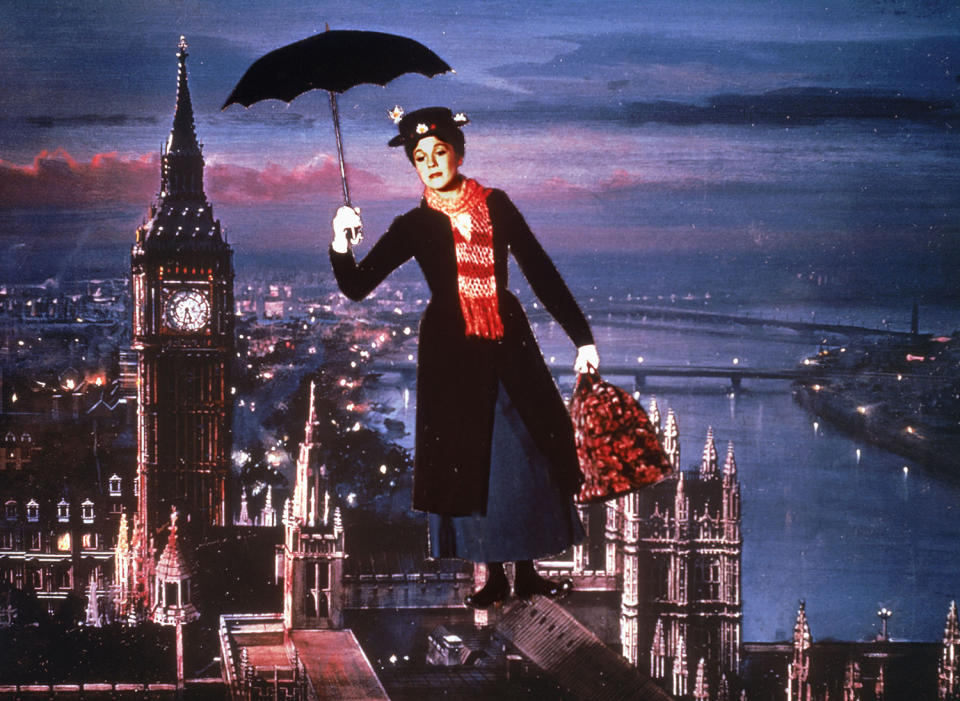
One major difference that you’ll notice in Mary Poppins Returns, compared to the original, is the use of real life locations. The 1964 film, although set in London, was shot entirely at the Walt Disney Studios in Burbank, California using painted London background scenes.
This wouldn’t cut the mustard for the sequel. In a bid to make the sequel more accessible for modern audiences, Marshall decided he wanted to shoot as much as he could on location, telling production designer John Mhyre: “I want to make it kind of a love letter to London.”
After extensive location scouting, they decided to base the shoot in London, shooting on sound stages at Shepperton Studios and at various famous locations across London, including one scene filmed outside Buckingham Palace.
“The very opening of the film, we see dawn breaking through the fog,” shares Mhyre.
“We see the Thames, we see Parliament, we see Big Ben, and that feels pretty Londony to us. And then through a whole series of real locations, they’re going to go by Tower Bridge, St. Pauls, Borough Market, through the parks, before we end up at Cherry Tree Lane.”
The Banks
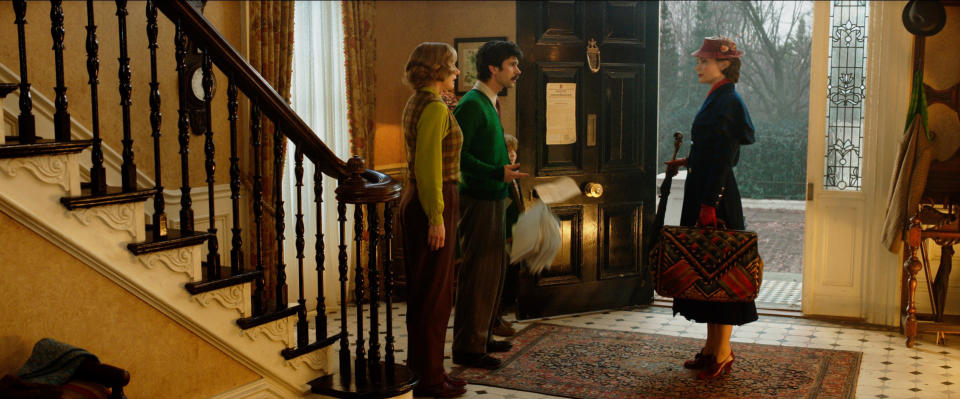
At Cherry Tree Lane, we find the Banks family still residing. Mother and father seemingly long departed (although we spotted their photo adorning a mantelpiece on set), the house is now occupied by the family of Michael Banks, played in the original by Matthew Garber, but in Mary Poppins Returns by voice of Paddington and Skyfall star Ben Whishaw.
The house is at risk of being repossessed after the family is struck by tragedy. Although it was never directly referenced on set, it looks like Michael’s wife, and mother to their three children, has recently died, and Colin Firth’s Fidelity Fiduciary Bank is in the wings waiting to kick them while they’re down.
It’s at this point Mary arrives, with Jack reeling her in from the sky using a kite. Cherry Tree Lane has been meticulously recreated for the film, although production designer Mhyre admits they’ve downsized it slightly.
“We didn’t really like the idea that [in the first film] it looked like they were all living in white mansions,” he explains. “We thought it might be more accessible for today’s audience if they lived a little more humbly. So we took the size of their houses down. We added brick into them and made them feel a little more real.”
The music
Stepping in the shoes of the Sherman brothers for the soundtrack is Marc Shaiman and Scott Wittman, of Hairspray fame. “What we created is a new and vibrant, wholly original musical score written by Marc and Scott that tells our story of Mary Poppins and our story of the Banks family and new characters,” shares Platt.
Miranda, himself no stranger to writing original musicals, has nothing but praise for the songwriters.
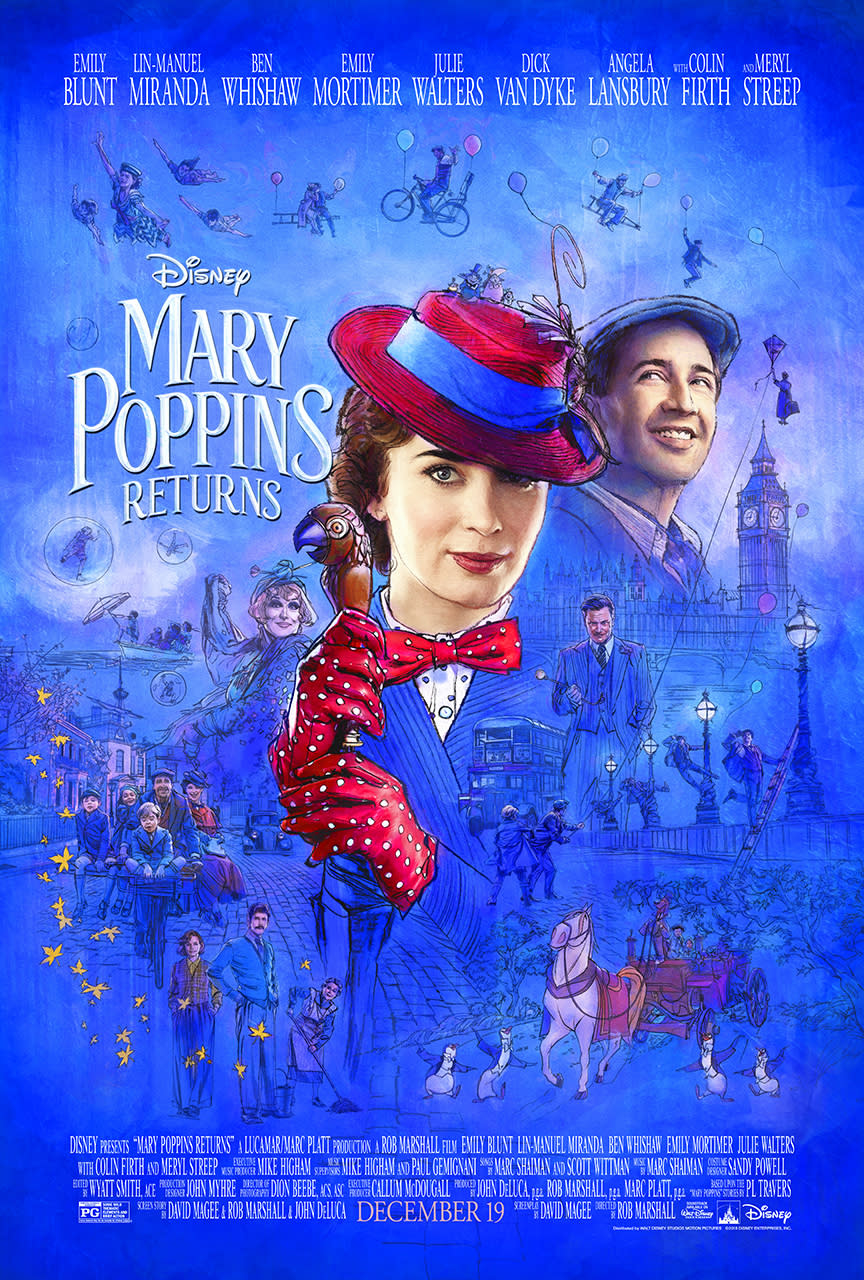
“We write so differently that there’s no jealousy,” the Hamilton creator says. “It’s just like a thrill that I get to play in this world. We don’t normally get to play together. So to get to sing Marc and Scott’s music is a real joy. And it’s such a love letter to the Sherman brothers as you will soon see, that it’s great. It just feels like a love letter to the original.”
All of the music we heard on set was very reminiscent of the original’s soundtrack. Motifs and phrasing from familiar songs surfaced during every musical number that we heard or saw performed.
A full track list will undoubtedly be announced in due course, but some of the songs we jotted down include titles like ‘Underneath the lovely London Sky’, ‘The place where lost things go’, ‘Can you imagine that?’, ‘Nowhere to go but up’, ‘Trip a little light fantastic’, and ‘The Royal Doulton Music Hall’.
Fantasy sequences

That last song title accompanies a fantasy sequence briefly glimpsed in the new trailer. It’s one of the biggest nods to the original film: a musical sequence that plays out in a mixture of live action and traditional animation, like ‘Supercalifragilisticexpialidocious’, complete with dancing penguins and all.
“In [the book] Mary Poppins Comes Back they go into a Royal Doulton bowl. They disappear into it, so it just made sense to do because it felt like it was in the DNA of that world.”
Marshall wanted to do it for real again, using traditional animation methods, rather than wholly relying on CGI. He says it’s part of the reason the film has required so much time in post-production.
“And we’ve obviously come a long way in terms of animation,” adds the director. “Most of it is computer-generated now, but what’s lost with that is that sense of artistry, this beautiful and extraordinary work.”

“If Disney would have had this technology back then, I’m sure he would have used it, too. So when you see the film, you are in this 2D hand-painted world but in a three-dimensional way. It’s why our post production has been longer than normal. I mean, we have all been in post-production for a year because of that, but it is live action and animation so there’s this wonderful interaction between the two, and I believe everyone feels it was worth it.
“Everyone agreed it felt fresh again, when you see them speaking to these animated characters that are drawn that way and you feel that artistry, you feel a sense of nostalgia.”
Other fantasy sequences include an underwater routine, again briefly spotted in the trailer, with a huge rubber duck and a sunken shipwreck, and a two-handed vaudevillian routine performed by Mary and Jack.
Topsy
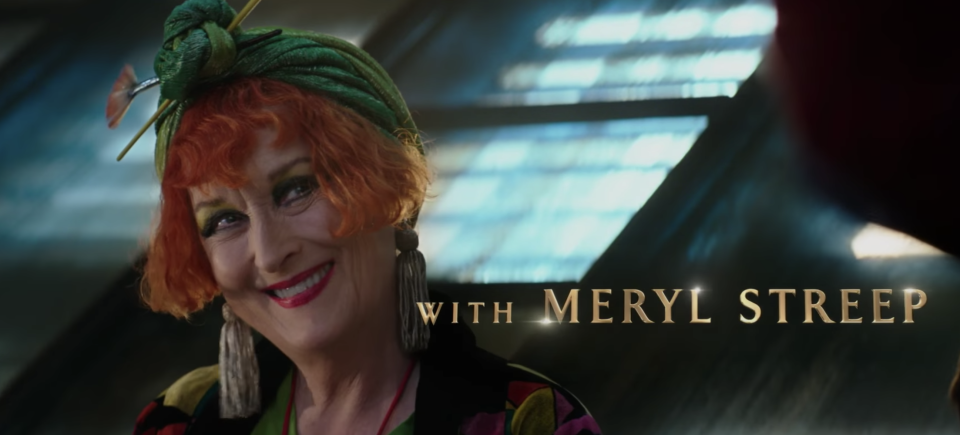
One of the most impressive sets we saw at Shepperton was Topsy’s upside down house. Topsy Turvy, played by Meryl Streep, is Mary Poppins’ distant cousin. Mary and the Banks children visit Topsy to see if she can help to repair the broken Royal Doulton bowl. Unfortunately for Mary (but fortunately for us) they visit Topsy’s house on the first Monday of every month which, of course, is when her entire house turns upside down.
Topsy, who only appears in one musical number, is Marshall’s nod to the Uncle Albert ‘I Love To Laugh’ scene from the original, and was inspired by a Mr Turvy in the books.
“The message is that he sees things from a different point of view because everything turns upside down on this certain day and Mary Poppins explains that sometimes it’s good to see things from a different point of view, so it’s a beautiful message, a wonderful message for kids.
“And so we thought, if it were a woman, what if we worked with someone that we adore, that I adore, and who we just worked with on Into the Woods: Meryl Streep. I wonder if she’d be interested in doing a character part like this, a small part, just one sequence in the film, so I asked her and she said, “What took you so long to ask?”
Cameos
Beyond the appearance of the record-breaking Oscar-winner, Mary Poppins Returns also has space for a couple of other high profile cameos, including one from a star of the original.
While Julie Andrews politely declined the chance to return, Dick Van Dyke was more than happy to return, putting in a couple of days on set as Mr Dawes, the son of the ancient banker he played in the first film.
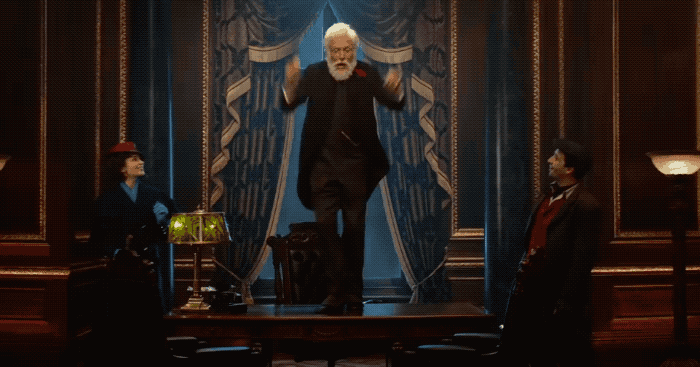
“He looks kind of the same as in the original film, he just doesn’t have to wear much make-up,” jokes Platt. “But it was a quite an exciting moment for all of us when he did his couple days of shooting. His spirit, his generosity, his joie de vivre was just ever present, and so he created a wonderful role.”
“It was like the best two days ever,” beams Miranda, “I aspire to having that much energy in my life, someday, much less at 91. It was a joyous two days. We were in the scene together, and we were just huddled off in the corner, and I was asking questions about Bye Bye Birdie.”
Also putting in an appearance is Disney icon Angela Lansbury, who – if unsubstantiated rumours are to be believed – is playing the part originally intended for Andrews. Lansbury appears as a balloon seller in the film’s final sequence, a character from the books.
“When you go to the balloon lady you get to choose the right balloon,” explains Mhyre. “She doesn’t choose it for you, you have to choose the right balloon. And if you choose the right balloon, something really fantastical happens.”
Something really fantastical is guaranteed to happen when Mary Poppins Returns hits cinemas this Christmas.
Read more
Lea Seydoux eyes Bond 25 return
The story behind the £1m Han Solo jacket
Aquaman set visit report

 Yahoo Movies
Yahoo Movies 

